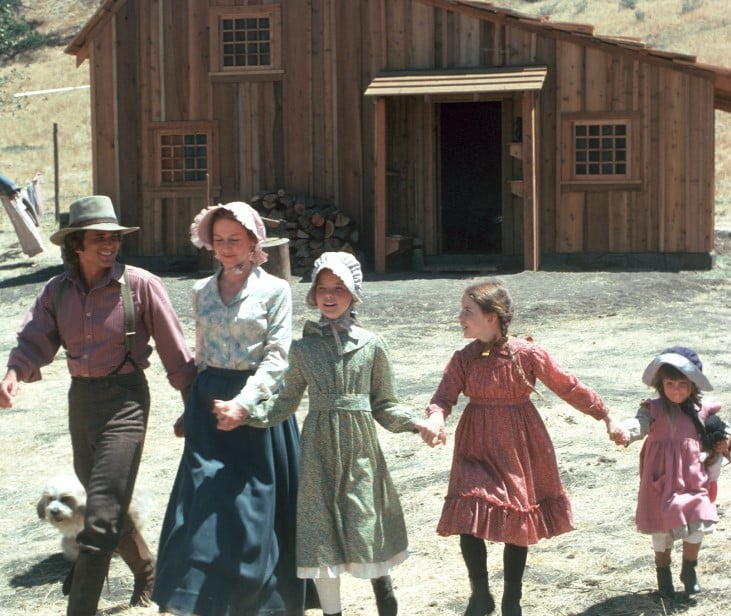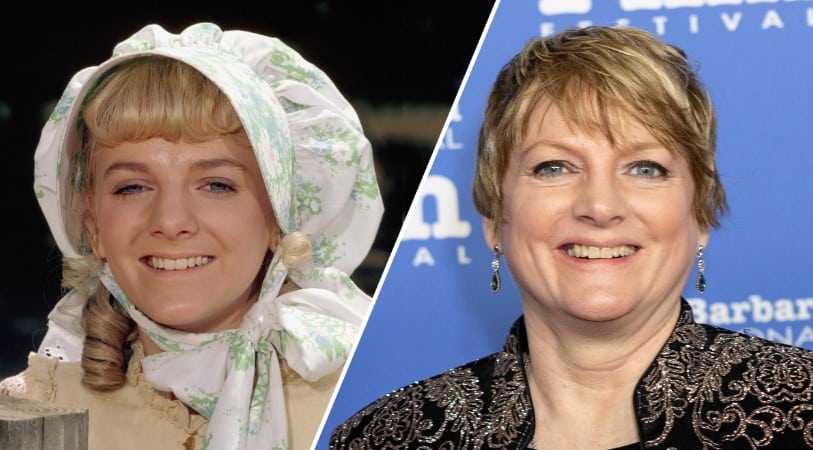Untold Truths Behind “Little House On The Prairie”: Laura Ingalls Wilder’s Memoir Shed Light On The Series
“The Little House” series is a collection of children’s books written by Laura Ingalls Wilder. They are based on her own experiences growing up as a pioneer girl in the American Midwest during the late 19th century. The books were later adapted into the popular TV series called “Little House on the Prairie,” which gained significant popularity in the 1970s and 1980s. No matter how many times you watch this series, there are some facts that even dedicated fans don’t know.
Violent scenes were left out of The Little House series

Laura Ingalls Wilder’s cherished “Little House” series of children’s books captivated readers with vivid descriptions of the “great, dark trees of the Big Woods” and the endless grass of the prairies in the west encountered by America’s pioneers. However, while the books painted an idyllic picture of frontier life, the Ingalls family faced harsh realities. Like many others on the American frontier, they had to deal with serious poverty.
If you read Wilder’s Pioneer Girl, you might know that it is the story of her childhood, initially written by the author in 1930 when she was in her early 60s. However, it faced rejection from editors at that time. The memoir contains stories that were not included in her children’s novels, as Wilder herself felt they “would not be appropriate” for children.
Do you remember the tragic accident where a man’s drunkenness killed himself due to ignited whisky fumes. When he lit a cigar, the whisky fumes on his breath ignited that led to his death. The accident happened in the town of Burr Oak and she witnessed it. Another recollection involves a shopkeeper mistreating his wife by dragging her hair and then he poured kerosene on the floor of his house, setting their bedroom on fire.
The original book didn’t win over publishers at that time. So Wilder decided to transform it into a series of children’s books, starting with Little House in the Big Woods. The first book introduces four-year-old Laura, who lives with her Pa, Ma, sisters Mary and Carrie, and their dog Jack in a small gray log house in the Big Woods of Wisconsin. “As far as a man could go to the north in a day, or a week, or a whole month, there was nothing but woods. There were no houses.”
Ma and Pa Ingalls were complicated parents

Despite facing poverty and frequently moving, the Ingalls parents worked hard to make life as stable and joyful as possible for their children. Charles especially seemed to be a romantic, adventurous type who loved music, traveling, and the wilderness. Charles, in particular, had a romantic and adventurous spirit, enjoying music, travel, and the wilderness. According to the National Endowment for the Humanities, Wilder herself believed she inherited this romanticism from her father, saying that she owed “whatever religion, romance and patriotism I have … to the violin and my Father playing in the twilight.” Once, while the family lived in a doorless dugout on the prairie, Charles woke Laura to witness nearby wolves, their fear overshadowed by mutual wonder. “See how his coat shines,” Pa told Laura.
Caroline, on the other hand, often found herself compensating for her husband’s romantic and occasionally impractical nature. She took on the responsibility of protecting her children, staying vigilant with a pistol nearby when necessary. Caroline frequently had to be the pillar of stability and strength for Laura and her sisters, especially during tough times exacerbated by their family’s constant relocation and financial struggles.
Nellie Oleson never actually existed

For those who have read the later books in the Little House series or are fans of the 1970s television adaptation, Nellie Oleson is often remembered as a spoiled bully who made Laura’s life difficult. However, the truth is more complex, especially when we consider that Laura herself is a biased storyteller.
First of all, as author Tracy Lawson points out, Nellie Oleson never actually existed but the character was inspired by three individuals from Laura’s childhood: Nellie Owens, Genevieve Masters, and Stella Gilbert.
Though Laura later stated that, “I am sure she was much more unhappy than she ever could have made me,” readers often feel that the grown Laura still wanted a touch of revenge. While she occasionally scolds her fictionalized younger self for seeking revenge against Nellie, Laura’s father, Pa, is often depicted in the background, his eyes twinkling with implicit approval of Laura’s actions.
According to Prairie Fires, Laura, as an adult, often perpetuated the belief that Nellie was a real person rather than a composite character. When readers inquired about Nellie’s fate, Wilder would often vaguely mention that she had relocated somewhere back East.
Laura had an Ingalls brother who were not included the story

While fans of Little House on the Prairie might believe that Ma and Pa Ingalls had only daughters – Mary, Laura, Carrie, and Grace, in fact, between Carrie and Grace, they had a son named Charles Frederick, affectionately known as Freddie, who was born in November 1875.
Unfortunately, Freddie’s life was tragically short-lived. When he was around eight or nine months old, and Laura herself was eight years old, Freddie fell ill. It’s not clear what, exactly, made him ill, but he began experiencing severe and life-threatening diarrhea. Despite their efforts, Freddie’s condition worsened, and one devastating day, he passed away. Laura wrote that Freddie “got worse instead of better, and one terrible day straightened out his little body and was dead.”
The heartbreaking event of Freddie’s early death was cut out of the books. It is believed that Laura chose not to include it, possibly because it was her first encounter with death and the accompanying grief. Throughout her life, she actively avoided delving into similar topics, particularly when they involved children.
If Freddie’s passing was indeed a traumatic experience that haunted Laura, it’s understandable why she would exclude it from a book series primarily aimed at evoking warm and familial sentiments, rather than delving into the often harsh realities of life on the American frontier.

